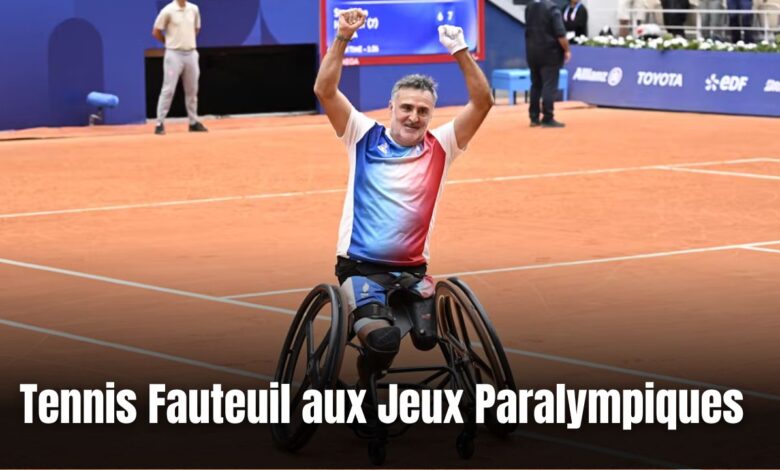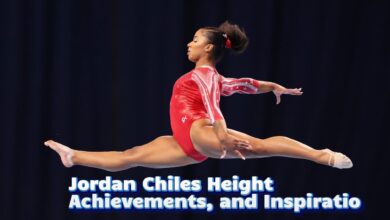Tennis Fauteuil aux Jeux Paralympiques

Tennis fauteuil aux Jeux Paralympiques has become a cornerstone of the Paralympic Games, captivating audiences worldwide with its display of resilience, skill, and athleticism. As one of the most popular sports in the Paralympic movement, tennis fauteuil (wheelchair tennis) has grown in prominence and continues to inspire both athletes and fans alike. In this article, we delve deep into the world of tennis fauteuil, exploring its history, rules, and the athletes who have shaped the sport. Our goal is to provide a comprehensive guide that not only informs but also celebrates the essence of this remarkable sport.
The Evolution of Tennis Fauteuil aux Jeux Paralympiques
Tennis fauteuil made its Paralympic debut at the 1988 Seoul Games as a demonstration sport, and it was officially included in the Paralympic program by the 1992 Barcelona Games. The sport’s rapid inclusion in the Paralympic Games highlights its growing popularity and the recognition of its competitive nature. Since then, tennis fauteuil has evolved significantly, with advancements in technology, training techniques, and global participation contributing to its rise.
Understanding the Rules and Structure of Tennis Fauteuil
Tennis fauteuil follows the same basic rules as traditional tennis, with a few key adaptations to accommodate the use of wheelchairs. The most significant modification is the “two-bounce rule,” which allows the ball to bounce twice before being returned. The first bounce must occur within the standard court boundaries, while the second can land outside the court.
Equipment and Court Specifications
Athletes in tennis fauteuil use specially designed sports wheelchairs that are lightweight and highly maneuverable. These wheelchairs are built to enhance the player’s agility on the court, enabling quick turns and precise movements. The dimensions of the tennis court remain the same as in able-bodied tennis, with singles matches played on a standard court and doubles matches utilizing the full width of the court.
Categories and Classification in Tennis Fauteuil
To ensure fair competition, tennis fauteuil aux Jeux Paralympiques is divided into different categories based on the athletes’ level of physical impairment. The two primary categories are the Open division and the Quad division. The Open division includes athletes with impairment in one or both legs but with full arm functionality, while the Quad division is for athletes with impairments in both their legs and arms, requiring modified rackets and additional support.
Open Division
In the Open division, players compete in both singles and doubles events. This category showcases some of the most intense and competitive matches, with athletes demonstrating incredible speed, power, and precision. The Open division is further divided by gender, with separate competitions for men and women.
Quad Division
The Quad division, on the other hand, requires athletes to overcome more severe physical limitations, making their achievements on the court even more remarkable. This division also includes both singles and doubles events, and it often features adaptive equipment to aid the athletes’ gameplay.
Prominent Athletes in Tennis Fauteuil aux Jeux Paralympiques
Over the years, several athletes have left an indelible mark on tennis fauteuil aux Jeux Paralympiques. Their dedication, talent, and perseverance have elevated the sport to new heights, inspiring future generations of athletes.
Shingo Kunieda
Shingo Kunieda of Japan is widely regarded as one of the greatest wheelchair tennis players of all time. His dominance in the sport is unparalleled, with numerous Paralympic gold medals and Grand Slam titles to his name. Kunieda’s precision, mental toughness, and relentless drive have made him a true legend in the sport.
Esther Vergeer
Esther Vergeer of the Netherlands is another iconic figure in tennis fauteuil. With a career spanning over a decade, Vergeer maintained an extraordinary winning streak, securing her place as the most successful female wheelchair tennis player in history. Her contributions to the sport extend beyond her victories, as she continues to be an ambassador for Paralympic sports.
David Wagner
In the Quad division, American David Wagner has been a dominant force. Known for his strategic gameplay and adaptability, Wagner has won multiple Paralympic medals and is a prominent figure in the Quad division. His success has helped raise the profile of the Quad category within the tennis fauteuil community.
The Impact of Tennis Fauteuil on the Paralympic Movement
Tennis fauteuil aux Jeux Paralympiques has played a significant role in the growth and visibility of the Paralympic movement. The sport’s inclusion in the Paralympic Games has not only provided a platform for athletes with disabilities to showcase their talents but also contributed to changing perceptions of disability in society. The competitive nature of the sport, combined with the stories of personal triumph and resilience, has captivated audiences around the world, fostering greater inclusivity and awareness.
Advancements in Technology and Training
The evolution of tennis fauteuil has been closely tied to advancements in wheelchair technology and training methodologies. Modern sports wheelchairs are designed with cutting-edge materials and engineering techniques, allowing athletes to reach new levels of performance. These advancements, coupled with rigorous training regimens, have enabled athletes to push the boundaries of what is possible in the sport.
The Future of Tennis Fauteuil aux Jeux Paralympiques
As we look to the future, tennis fauteuil aux Jeux Paralympiques is poised for continued growth and development. The sport’s increasing popularity, combined with ongoing innovations in technology and training, suggests that we will continue to see new records and milestones being achieved. Additionally, efforts to increase accessibility and participation at the grassroots level are likely to result in a broader pool of talent and even more exciting competitions in the years to come.
Conclusion
Tennis fauteuil aux Jeux Paralympiques is more than just a sport; it is a testament to the human spirit’s ability to overcome adversity and achieve greatness. From its humble beginnings to its current status as a premier Paralympic sport, tennis fauteuil has inspired millions and continues to be a beacon of excellence within the Paralympic movement. As we celebrate the achievements of the athletes who have shaped the sport, we also look forward to the future, where new talents will undoubtedly emerge, carrying the torch of this incredible sport forward.




